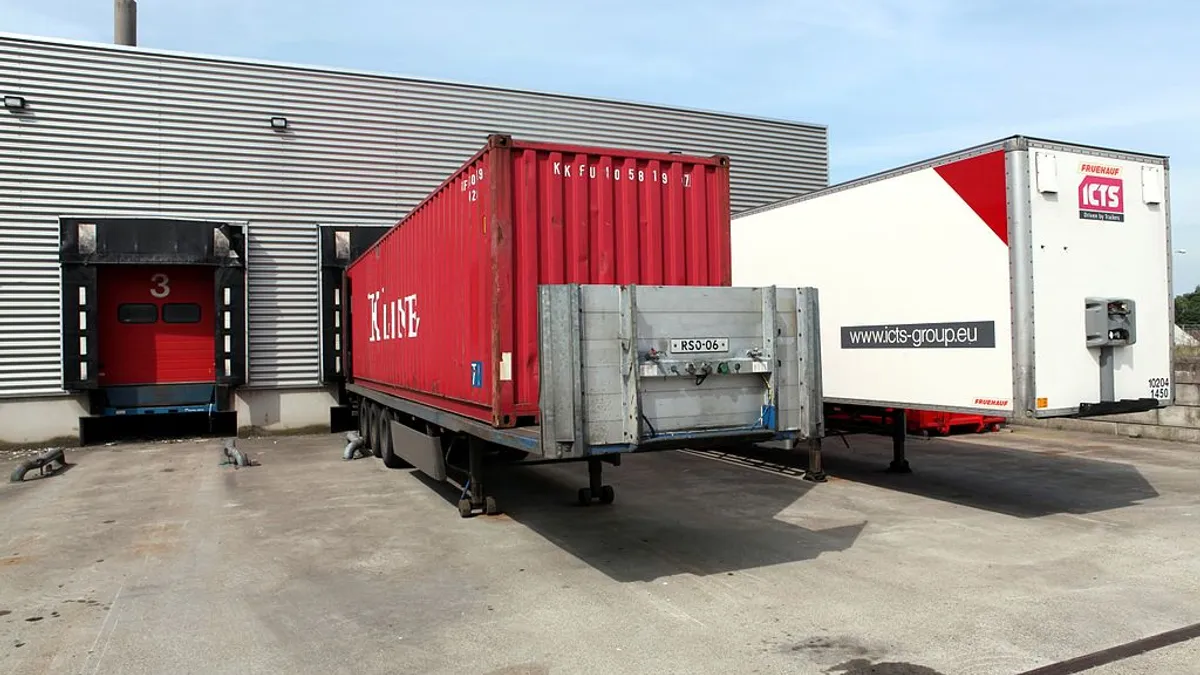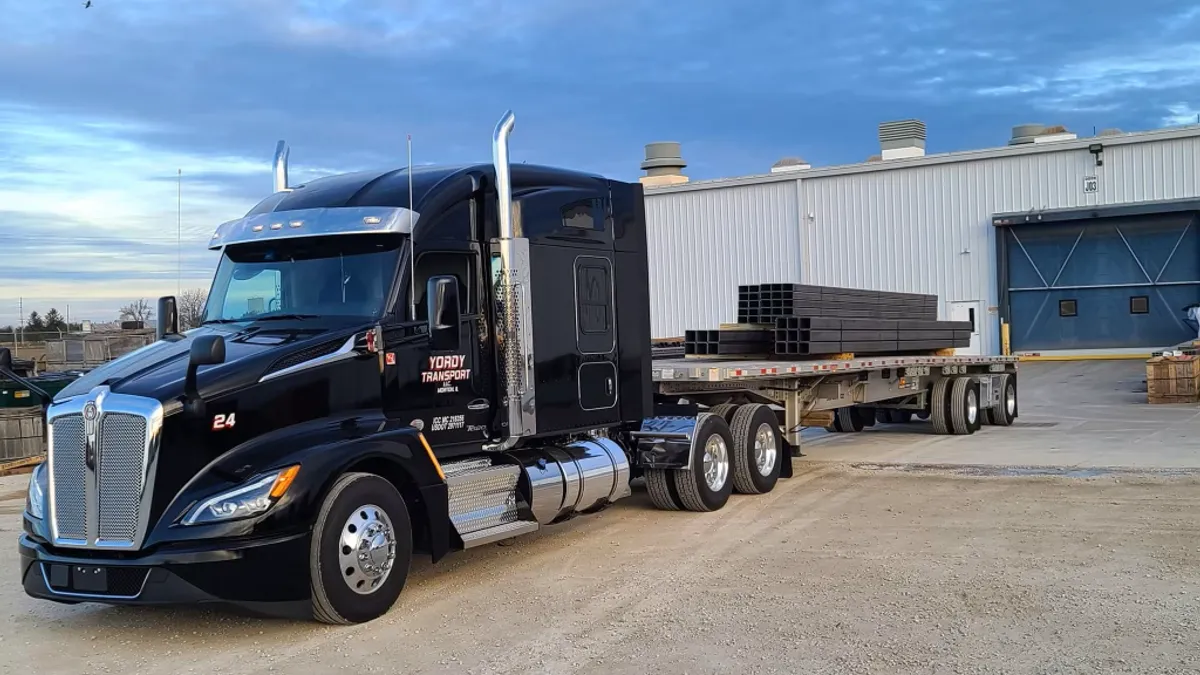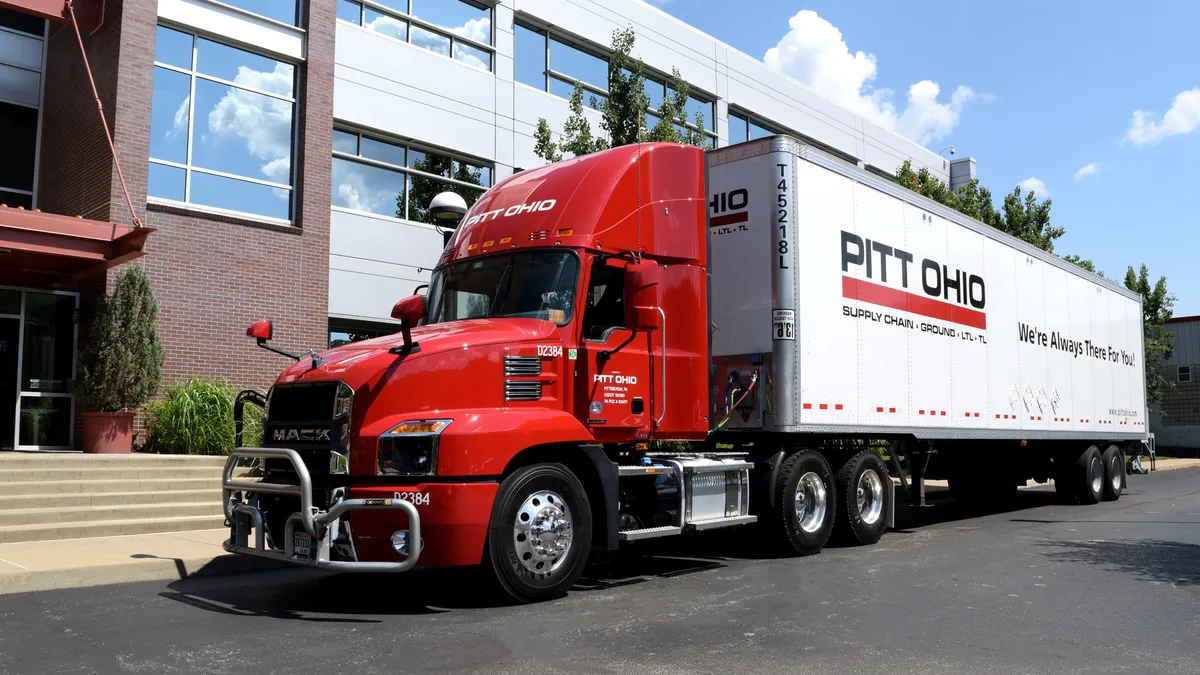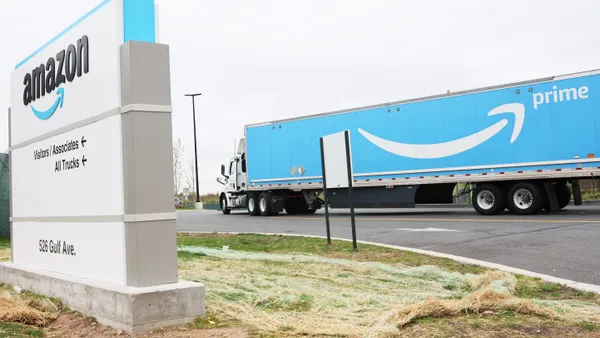This story is part of a series on the trends that will shape supply chains in 2021 and beyond. You can find all the articles on our trendline.
How does a shipper ensure a carrier is available when needed? Over the last couple of years, a term has arisen to paint a picture of a company that checks the boxes of an organization that a carrier wants to work with: shipper of choice.
In 2019, we asked a panel of experts what went into becoming a shipper of choice. They noted that carriers covet considerations like speed, profitability and digital connectivity.
A lot has changed since 2019 — with shippers and carriers alike dealing with dramatic demand swings during the pandemic and 2020 — but maybe not when it comes to shipper of choice.
"Shippers can't necessarily do anything about the demand patterns that have come from the pandemic," said Angela Acocella, a research assistant and PhD candidate at the Massachusetts Institute of Technology Center for Transportation and Logistics, whose recent research has looked at reciprocity between carriers and shippers.
What the pandemic did was underscore how difficult the process of freight procurement can be, Acocella said.
"It's not that different from other market cycles," she said, noting that while some markets experienced a very hot trucking market, others saw a downturn in their demand for freight.
"You can always get a truck. It's just a matter of price."

Michael Zimmerman
Partner and lead for analytics in the Americas at Kearney
In fact, the pandemic has made the idea of shipper of choice more important than ever, according to Michael Zimmerman, partner and lead for analytics in the Americas at Kearney.
"During the price spikes of 2018, when capacity was down and then demand was up, and during COVID — same thing — shippers known to have poor conditions didn't get the capacity," Zimmerman said. "And then the only way to get the capacity was to pay more."
For the shippers looking for freight and dealing with a tight market, the ideas underscoring shipper of choice still apply, Acocella said. And others agree, even if the phrase itself might be falling out of favor.
"I would say that term is a bit fatigued," U.S. Xpress Chief Revenue Officer Justin Harness said in an interview late last year. "But there are certainly things that shippers can do to become more attractive to the carrier community."
Does a history of higher payments matter?
In a research paper published last year, Acocella completed an analysis to determine if carriers are more likely to pick up a contracted shipper's freight in a tight market if the shipper had paid a higher price in a soft market.
"Are [carriers] remembering their shippers' previous performance or pricing when they're making their acceptance decisions?" she said in describing the research goal.
The research considered a shipper's performance across a few different variables including contract pricing, the consistency of volume tendering, tender lead times and dwell time.
Acocella and her co-authors found that when the demand for freight exceeds the supply from carriers, the carriers are "not really considering what their shippers' previous market behaviors were," she said, noting that the previous market means the preceding period of low demand for freight. "But really, they're responding to the current performance."
This means shippers could pay more in a soft market, but that won't, on average, help them procure freight when the market tightens. Higher rates help shippers procure freight, Acocella said, but only if they're competitive in the tight market.
Money can buy capacity, but a history of shared business helps
The variables that matter to shippers haven't changed that much as a result of the pandemic.
"You can always get a truck," Zimmerman said. "It's just a matter of price."
But the ability for a shipper to find capacity when the market is hot can come down to more than just price, Acocella said.
If a carrier has a long-standing relationship with a shipper, the carrier will have more information to determine if it should prioritize those loads.
"We can offer that capacity to that shipper because we know them over there and we can, you know, hop on the phone and we know they'll pick up," Acocella said.
So the history of a business relationship matters, but so do the variables hidden within that relationship that show the shipper's operational performance over time. The operational performance comes back to considerations like low dwell time and consistent tendering behavior.
Dwell time is one of the most expensive variables for a carrier that it doesn't have control over, so a shipper that manages it well will be placed in high regard, Harness said.
One reason dwell is so expensive for carriers is that drivers know they make more money when they're moving since they get paid by the mile. So a lane with high dwell time can lead to driver turnover, which is costly for carriers — especially during a driver shortage.
In 2020, shippers who had bad reputations with carriers struggled when capacity became tight, Zimmerman said.
"It was particularly bad in the second half," he said. "And even worse in the months of October, November, December, when the market was at its worst. And that's when poor shippers or non-shippers of choice had the worst time getting capacity."
Harness said U.S. Xpress does everything it can to accept loads from shippers that fall under contract. If it can't, it is "almost exclusively going to be based upon available capacity," and the carrier works with the shipper to find alternatives.
So while the pandemic might not have changed what carriers consider important, it did "shed a light on how difficult this process is," Acocella said.
The process for accepting a load will vary greatly depending on the carrier, with technology increasingly making the decision to accept or reject a load at larger carriers.
"It is a fairly automated process," Harness said, adding that "algorithms are helping us make the decisions on what we should and should not take based upon where the capacity is or where it's forecasted to be at any given point." He declined to comment on the variables used as predictors in these algorithms.
Shifting sands for contracts?
The 2020 calender year ended with many shippers realizing they've blown their budgets as a result of paying premiums to get freight, Zimmerman said.
"They're going to look for ways ... to mitigate that," he said.
Part of this will result in more focus on the shipper of choice fundamentals like reduced dwell and consistent tendering, Zimmerman said. But some carriers and shippers are starting to completely rethink the way they do their contracts.
"I don't know that it's necessarily because of the pandemic or not, but using dynamic pricing as a way to factor in market conditions to help manage this capacity allocation decision" is one potential change coming to freight procurement, Acocella said.
Dynamic pricing moves away from a single, annual contracted rate and toward a rate tied to an index of the freight market. The market dynamics that took place during the pandemic highlighted the need for a more flexible approach to freight procurement, she said.
But details like what index to use (DAT, Cass and Stephens are some options) and how much the price should fluctuate on a contract are still up for debate within the industry, she said.
"Both sides are talking about it," she said. "It's a conversation that's being had a lot."
Changes to contracts will provide more clarity to shippers and carriers about how rates will change as the markets shift. But when markets get hot, carriers will still have to make decisions about which freight to prioritize — and a history of short dwell times and consistent tendering behavior will still be important.






















